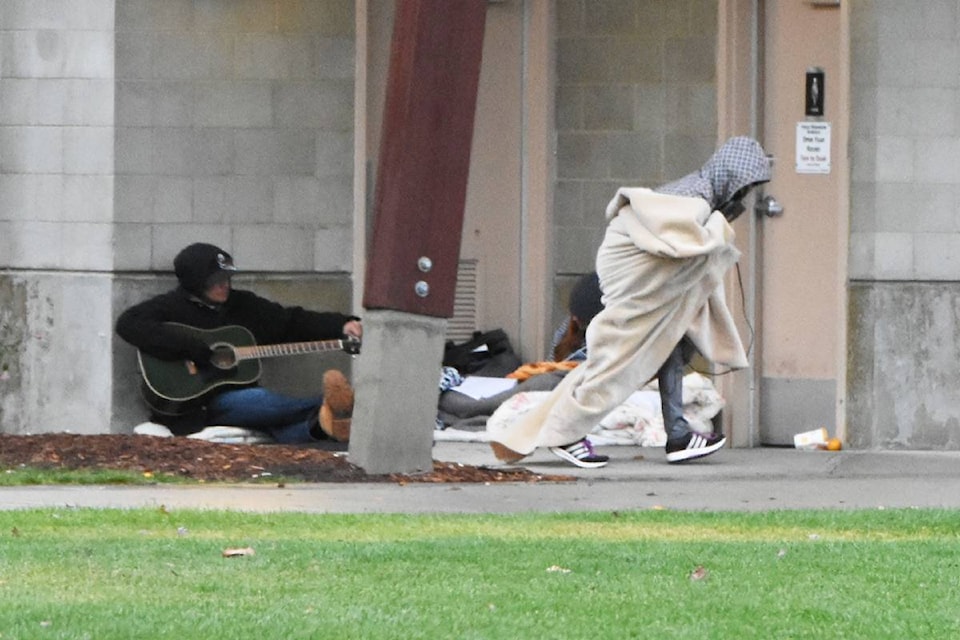Cost and access of housing along with the availability of good-paying, stable employment remain top of mind for residents in the South Okanagan-Similkameen, according to the latest Vital Signs report.
The Community Foundation of the South Okanagan Similkameen released its fourth Vital Signs report for the region on Thursday evening focusing on 10 key issue areas that affect the well-being of the communities.
With housing being a huge topic of conversation for the city for the past few years, Penticton Mayor Andrew Jakubeit isn’t surprised it made the list for lowest ranking. It was given a C- grade. He noted that this category also goes hand-in-hand with the people and work category’s low ranking (C+).
Related: New location for supportive housing in Penticton
“I think housing is an issue in the region no matter where you look, people are facing high costs and low availability,” said Jakubeit. “And that inhibits economic growth because employers want to expand and hire but there’s nowhere to house workers and their families.”
Citizen feedback included a comment about seeing people live in the bush while others live in $5 million houses.
Related: Forum addresses housing issues
“This is the biggest sector for our community to improve, in my opinion. Once those vulnerable members of our community can afford housing, other services and programs will address their needs. When people are not adequately housed, either facing homelessness or paying more than they can afford for housing, other areas of health and wellness are not able to be prioritized and this causes instability within the community,” said one of the respondents, whose comment was chosen to be included into the report.
The report said Summerland had a zero rental vacancy rate in 2017 versus a 2.2 per cent rate in 2016. Penticton’s vacancy rate was one per cent in 2017 versus 1.1 per cent in 2016. The rental vacancy rate for all of B.C. was 1.3 per cent in 2017. Vital Signs also reports that 50 per cent of households in Penticton were spending more than 30 per cent of their income on rent in 2015. The numbers are similar throughout the region — Osoyoos (39 per cent), Summerland (49 per cent), Keremeos (47 per cent), Princeton (44 per cent) and Oliver (41 per cent).
Related: Okanagan makes Top 5 of least affordable home markets list
The consistent theme across the responses emphasized the challenges related to housing and not just when asked about housing questions. The report summary states that the responses and statistics gathered make it clear the challenge is far from over.
The foundation said it will require a continued effort, imagination and collaboration from all corners of society.
“(Penticton) needs to be regionally-minded because we’re kind of the hub,” said Mayor Andrew Jakubeit. “And this report and results need to be a focal point of the next council.”
The report surveyed residents about 10 topics: learning, health and wellness, culture, belonging and leadership, safety, environment, getting started, housing, living standards, and people and work. Respondents graded each category for their community and the results were compiled and totalled for the region.
Aaron McRann, executive director for the Community Foundation of the South Okanagan-Similkameen said more than 1,000 people completed the 2018 Vital Signs survey.
“Respondents put a great deal of thought into grading their community and provided us with valuable insight into areas they feel need to be addressed,” he said.
The report revealed areas that respondents felt their communities were excelling in and where improvement is needed.
The two highest scoring categories for the region, both earning an A- grade, were safety and belonging and leadership.
The two lowest scoring categories for the region, earning a C- and C+ respectively were housing and people and work.
Jakubeit said these results ring true for Penticton since the city has been “working hard to be welcoming” and there are multiple organizations working to integrate newcomers. He noted that there are “still issues with petty crime but violent crime is way down for the city.”
One statistic regarding Penticton within the report states 42 per cent of Princeton and Penticton residents were affected by mood and anxiety disorders in 2016 (versus) 36 per cent for the South Okanagan.
“This is a good conversation starter. There is less of a stigma now (about mental health) — going to a counsellor is just as normal as going to the dentist,” said Jakubeit.
The Vital Signs stats and responses show that mental health services are a confusing system for some.
Overall, the region earned an A- grade from respondents. Jakubeit noted that the report was mostly positive and that he was happy with the overall rankings.
The Vital Signs report helps the community foundation decide how to distribute grants and look at creative ways to provide more support in an area that has a poor grade.
“For instance our work around the YES Project and the youth centre came out of the statistics in the report and the response from citizens citing youth mental health issues in our community,” said McRann. “We received an incredible amount of data this year, which is a good thing. We were able to report some very interesting statistics for different issues throughout the RDOS.”
To report a typo, email: editor@pentictonwesternnews.com.
<>